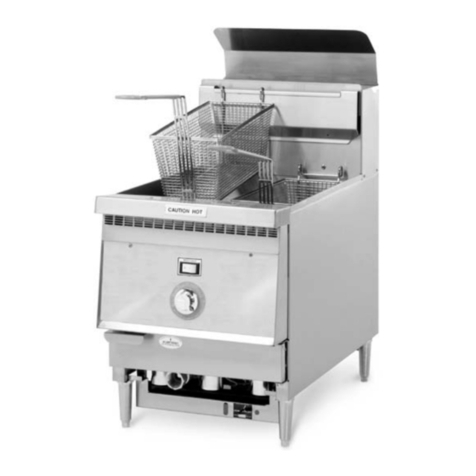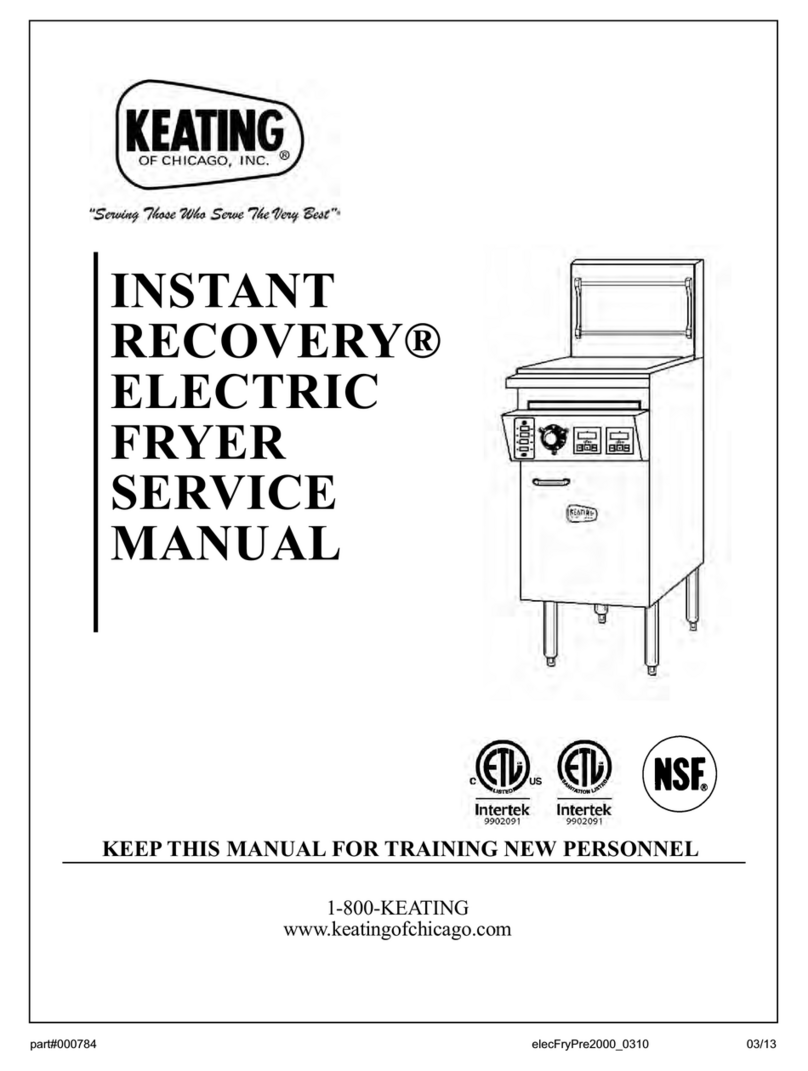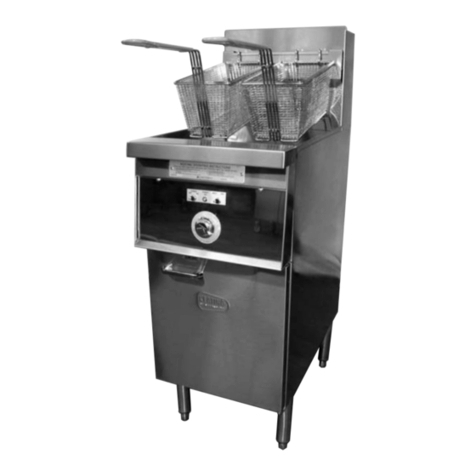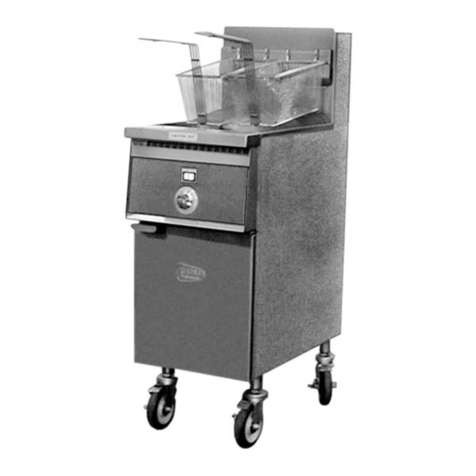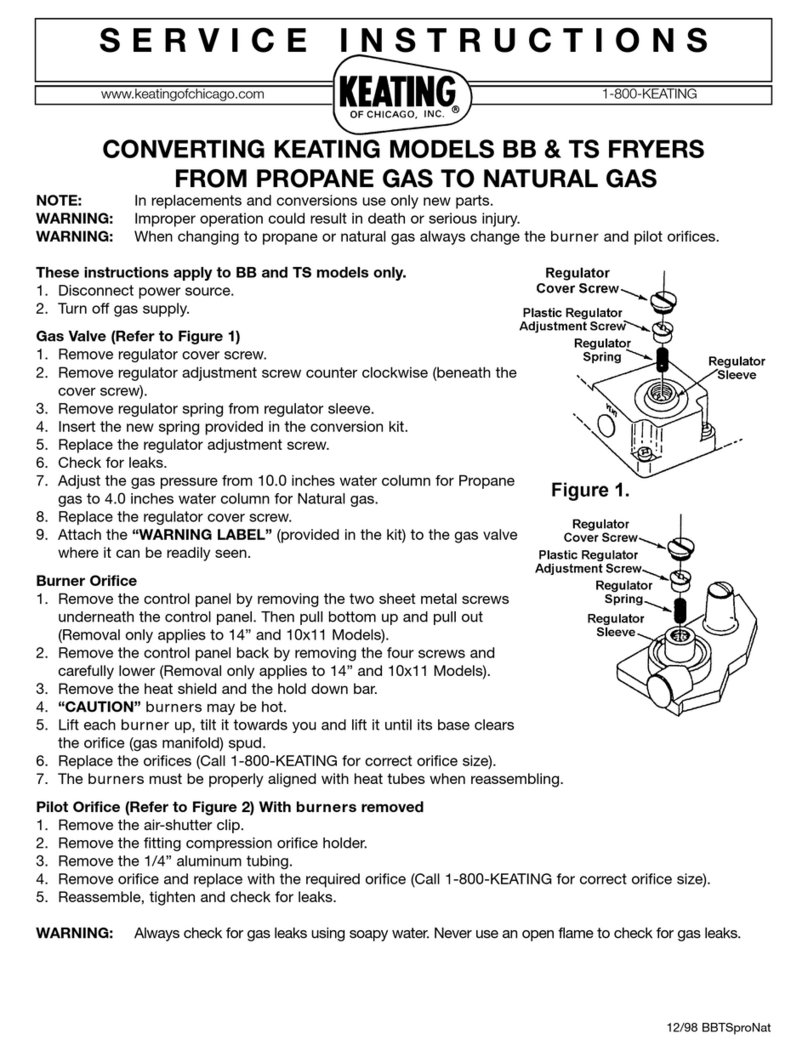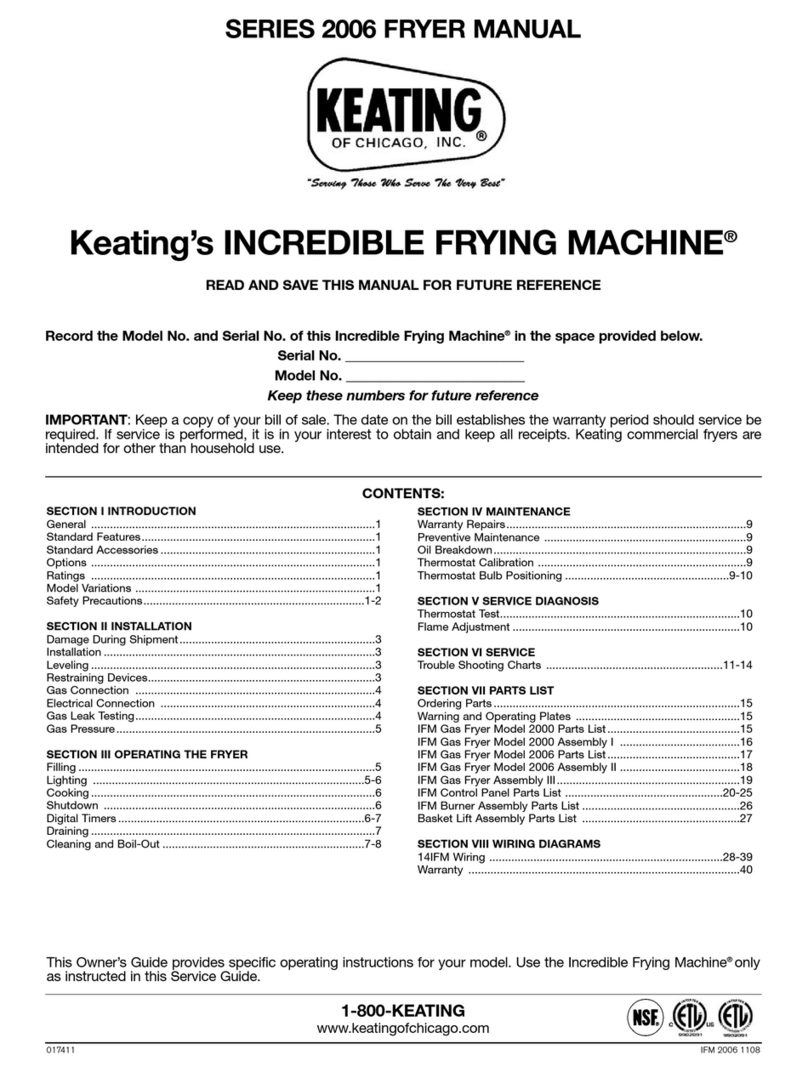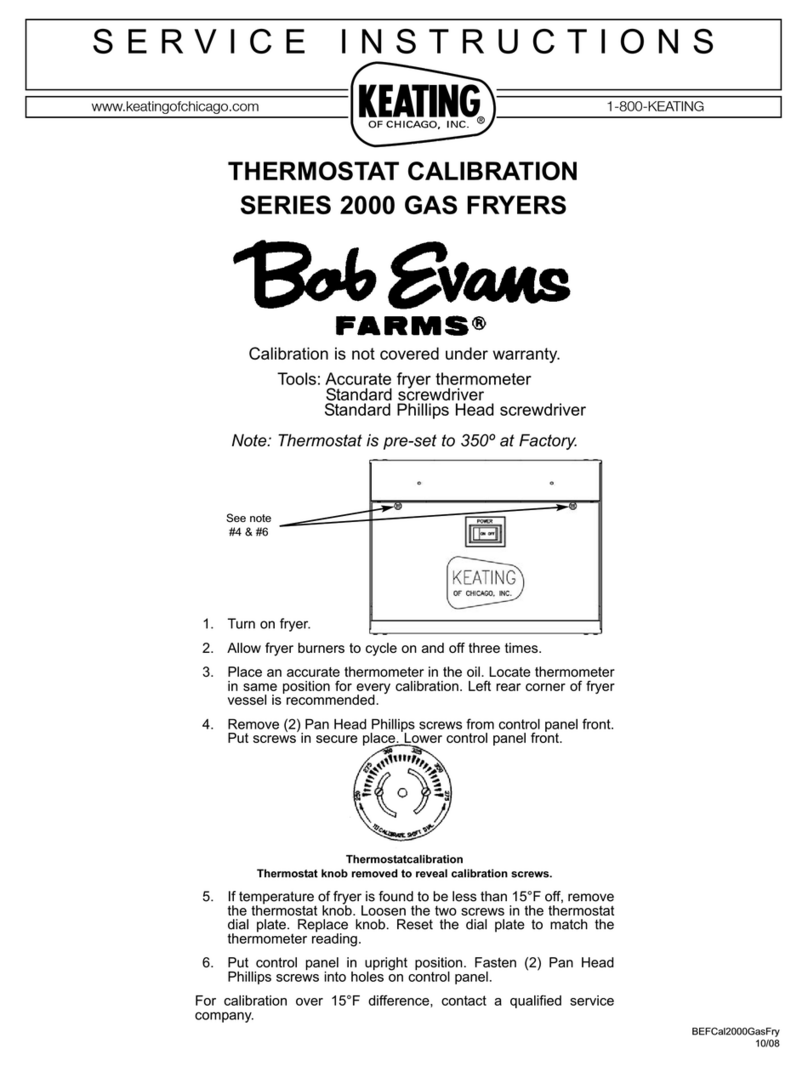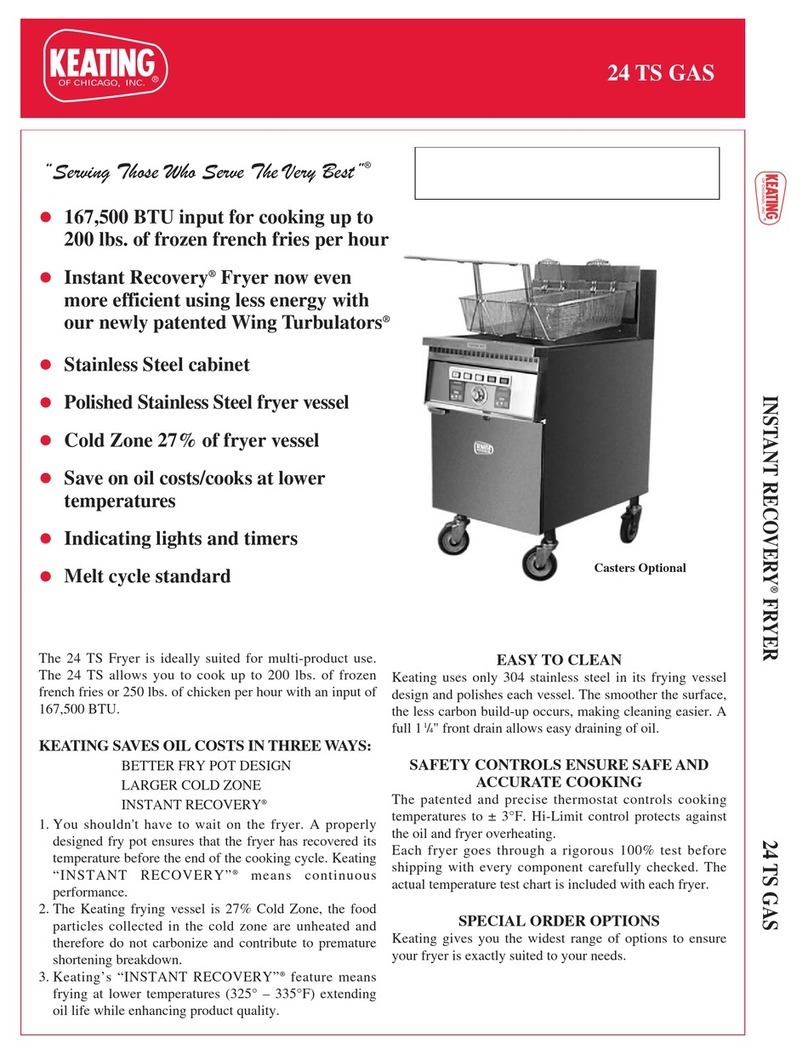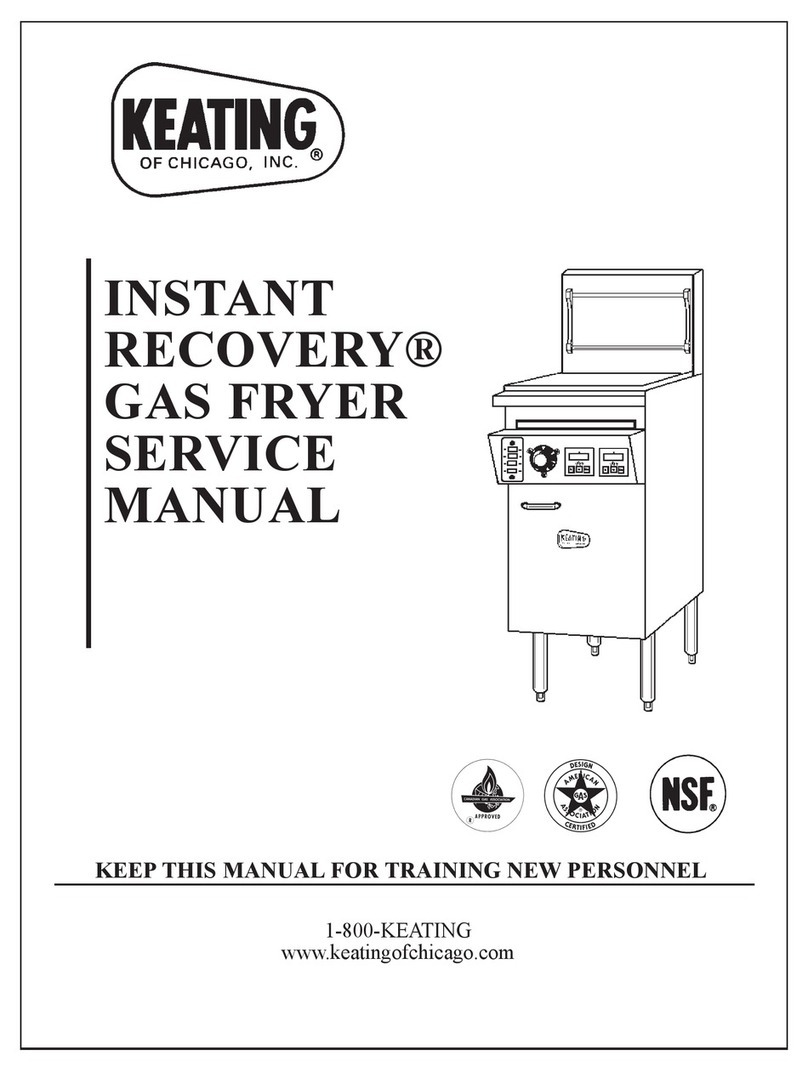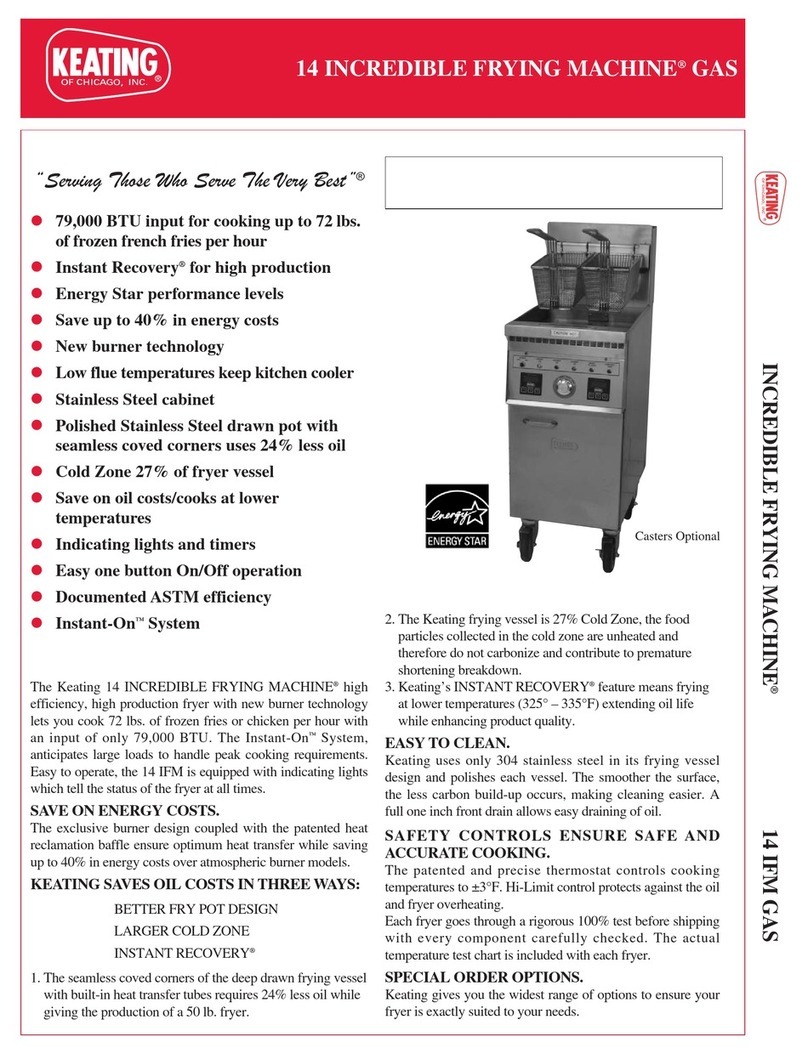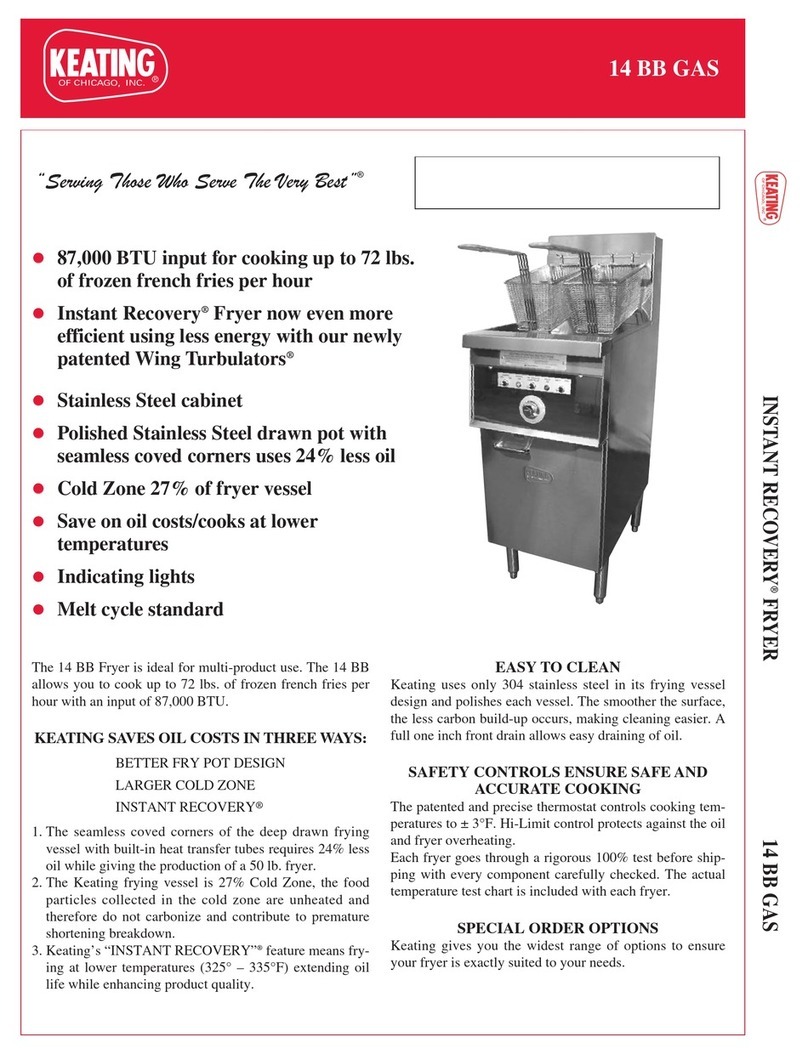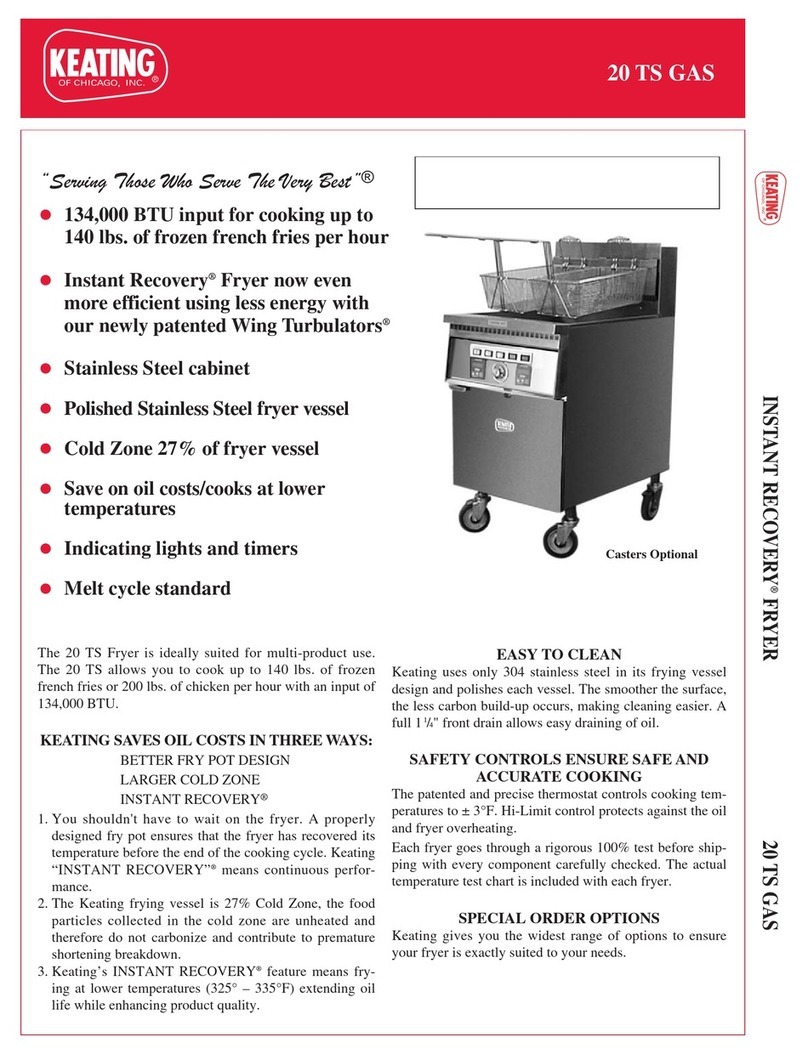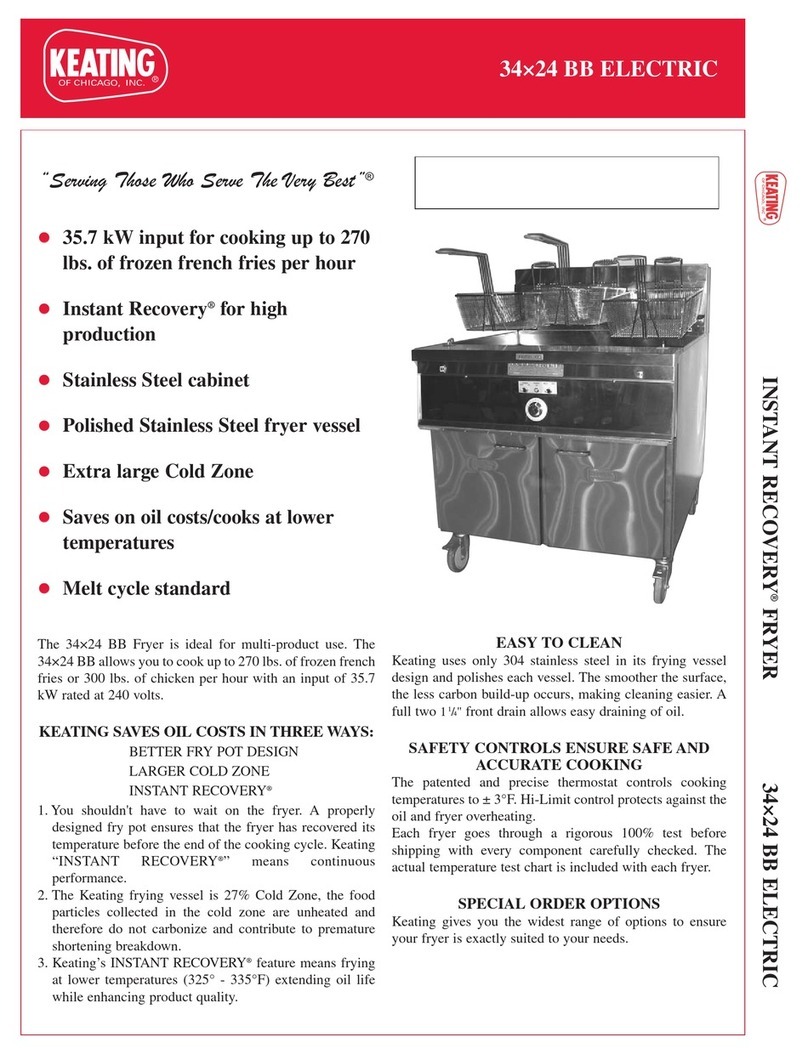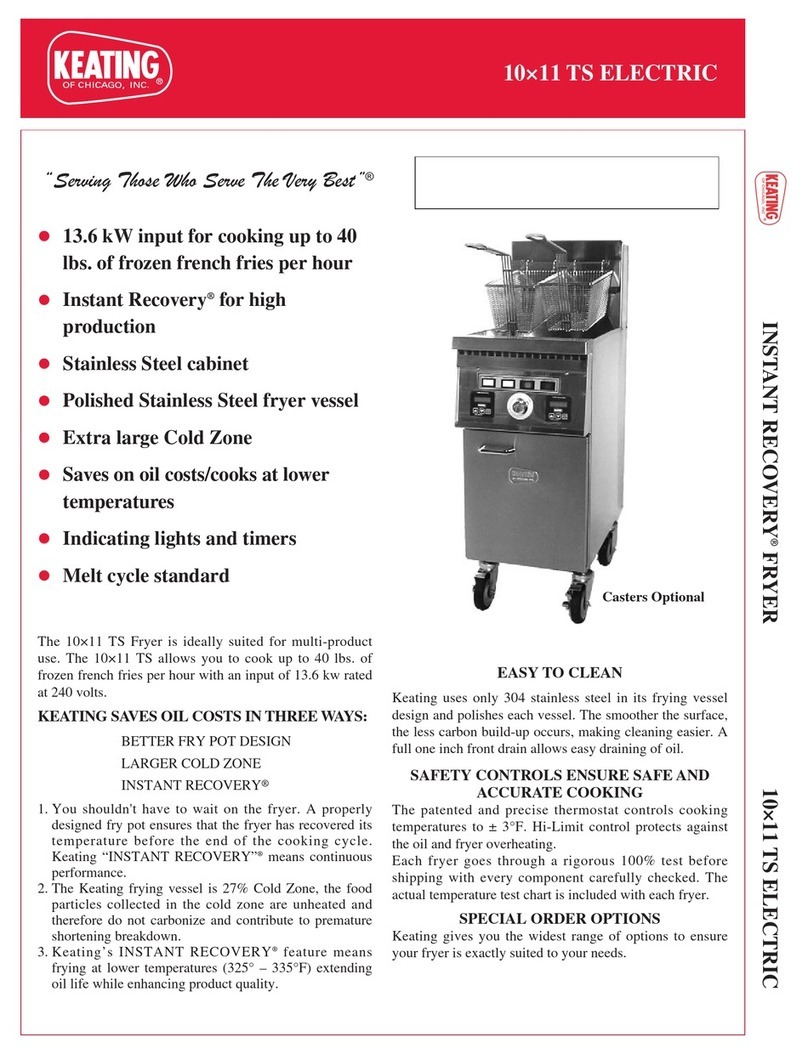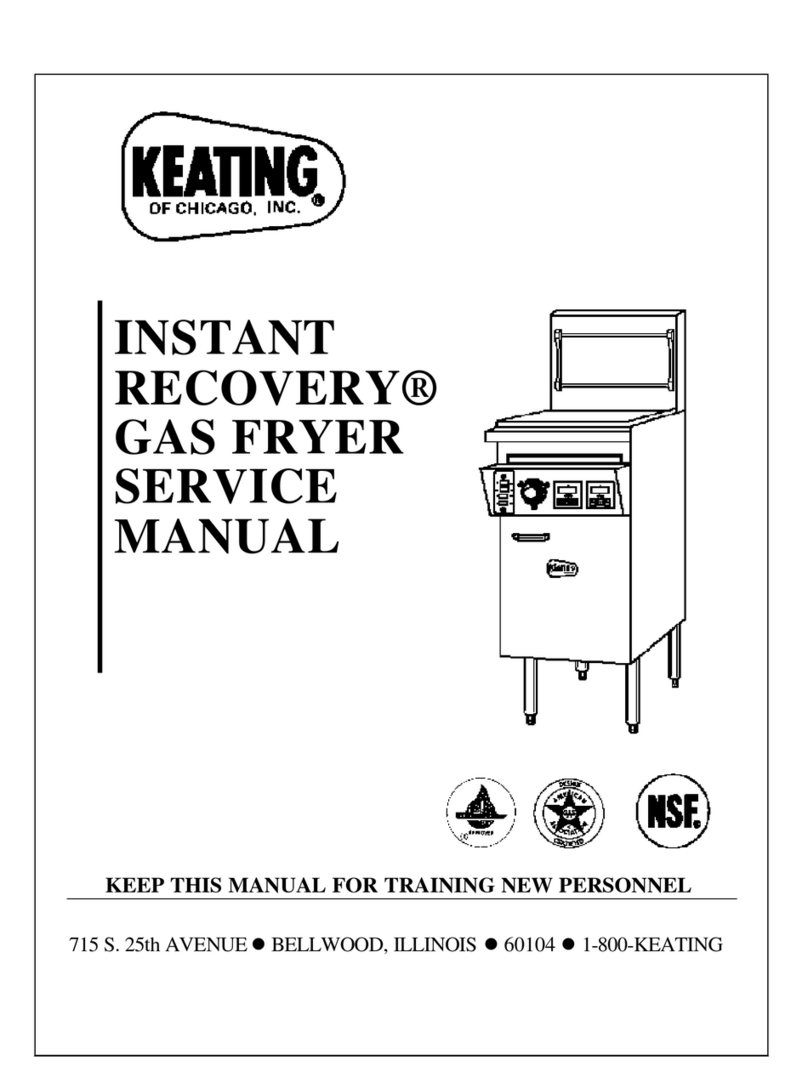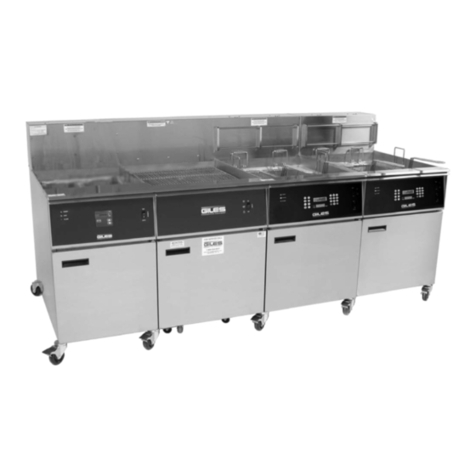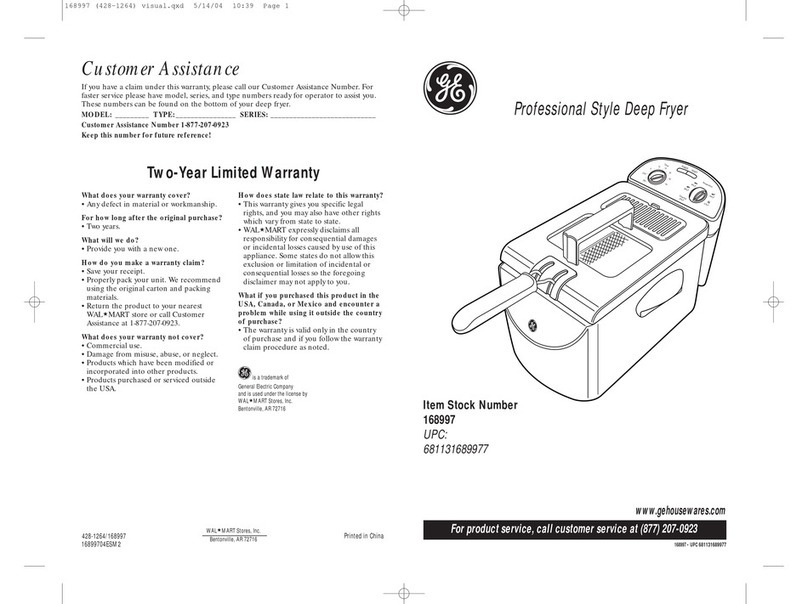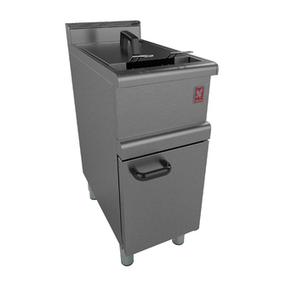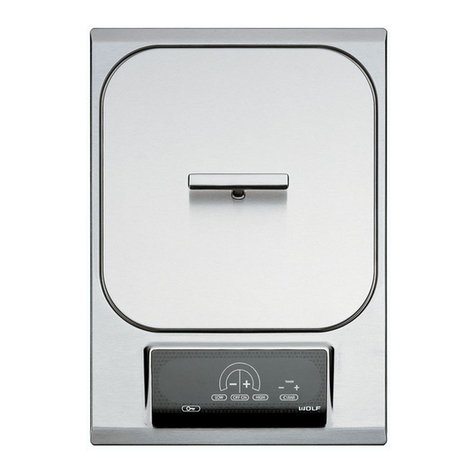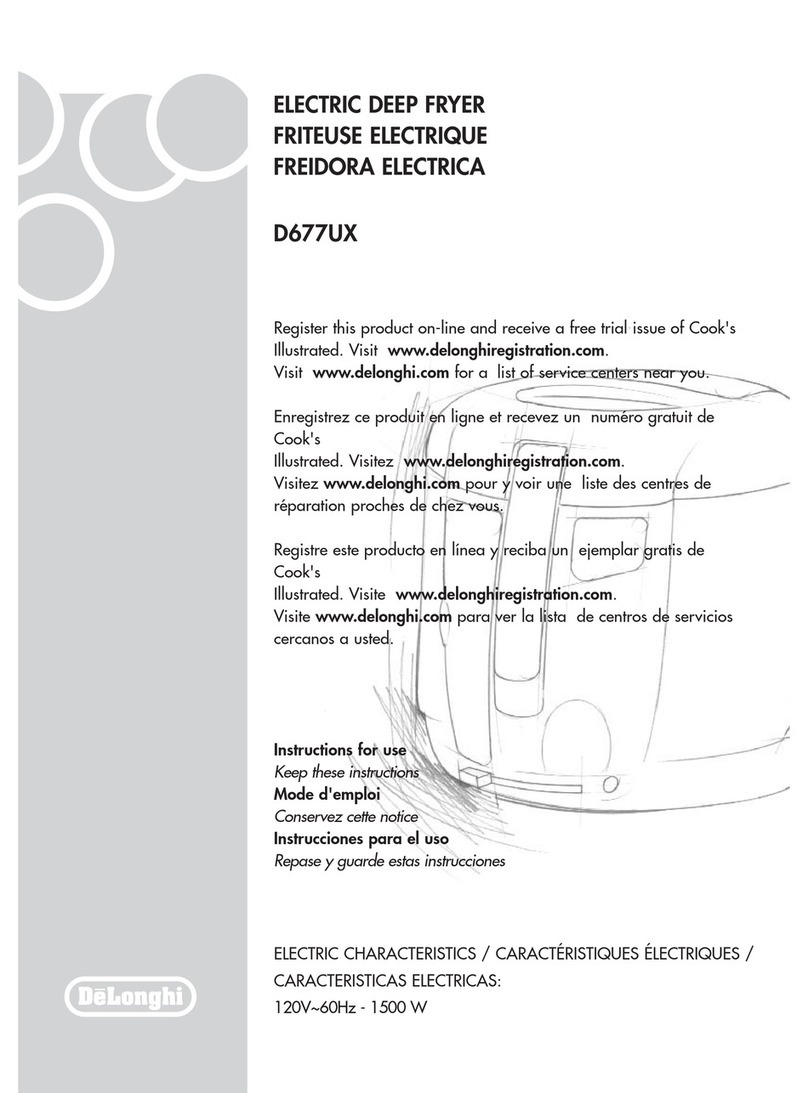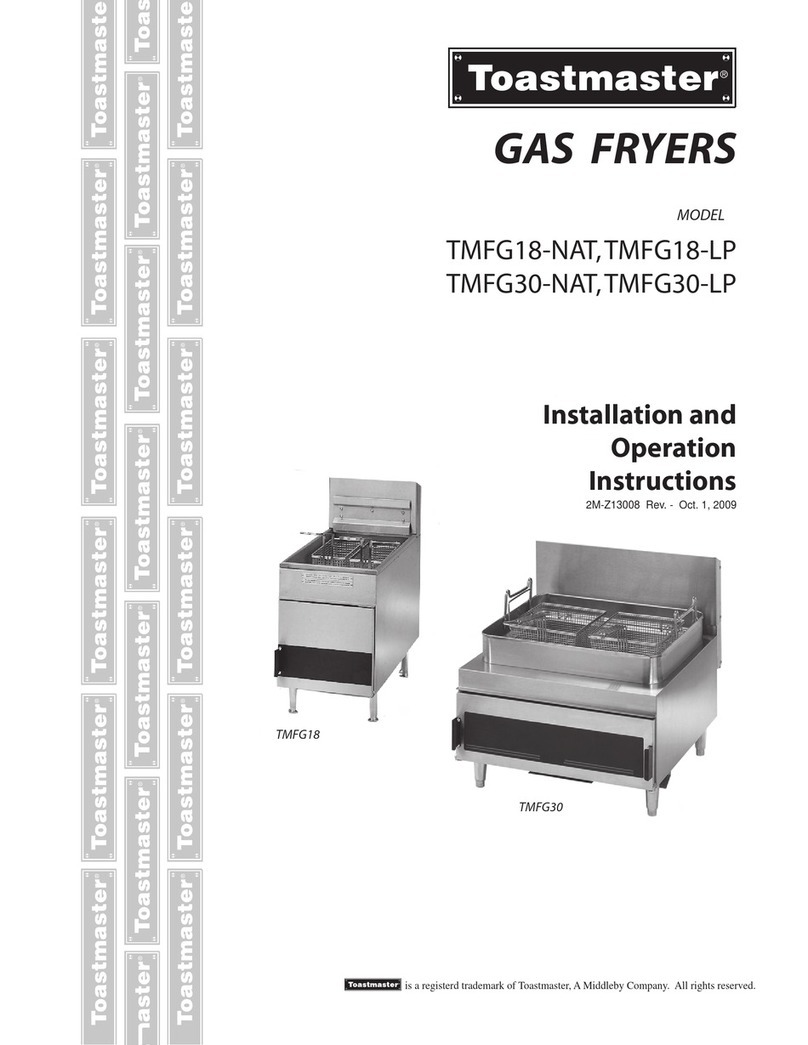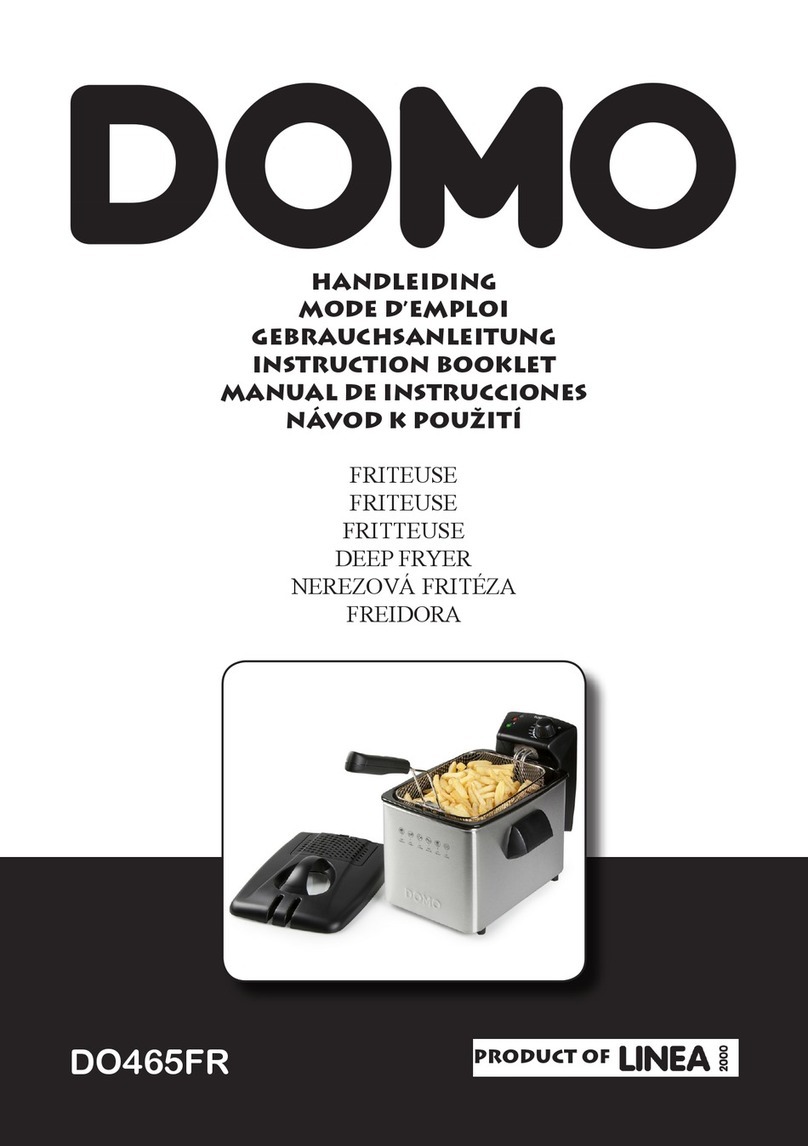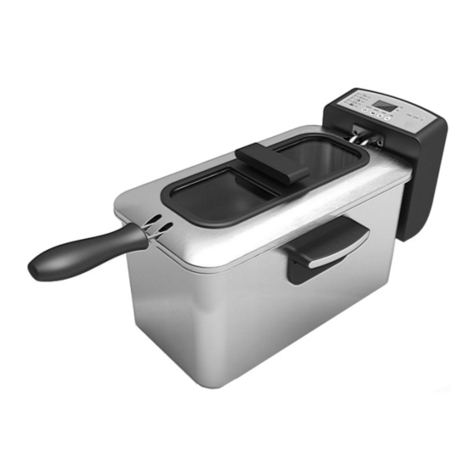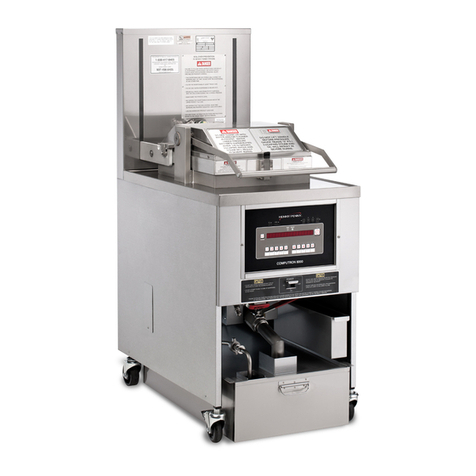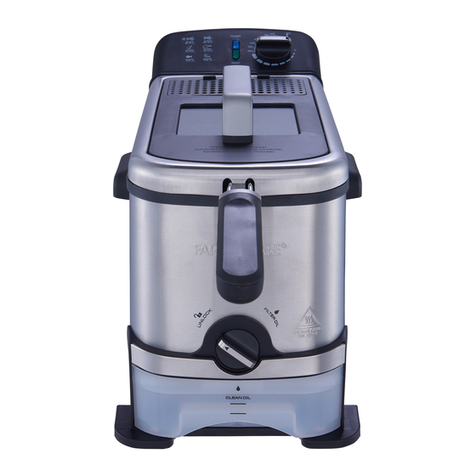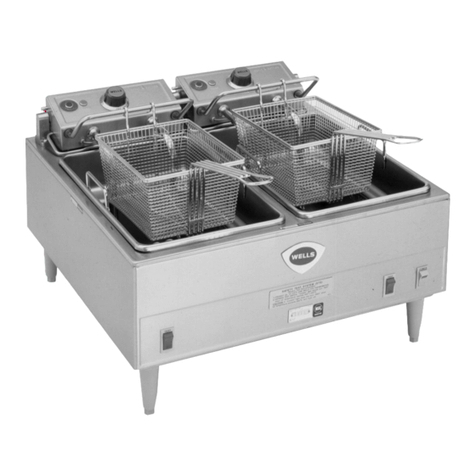
| keatingofchicago.com
2
SAFETY PRECAUTIONS
THIS SYMBOL WARNS YOU THAT SERIOUS BURNS
OR OTHER INJURIES MAY RESULT IF SAFETY IN-
STRUCTIONS ARE NOT FOLLOWED.
• This service manual should be retained in a safe
place for future reference. The installation of your
new fryer must conform to local codes or in the
absence of local codes, with the current National
Fuel Gas Code ANSI Z223.1/NFPA 54 (latest
edition), Natural Gas Installation Code
CAN/CGA-B149.1 or Propane Installation Code
CAN/CGA-B149.2.
• Your ventilation hood, when installed, must
conform to the current ANSI/NFPA 96 standard
(latest edition).
• No frame or restriction shall be constructed
around the fryer that will restrict air movement
into the fryer’s combustion area or prevent proper
ventilation.
• Keating fryers are designed to operate on the
gas fuel specified on the serial plate and must
not be operated with another gas fuel. They
cannot be converted to another gas fuel by
turning or engaging a switch.
DO NOT STORE OR USE GASOLINE OR OTHER FLAM-
MABLE VAPORS AND LIQUIDS IN THE VICINITY OF
THIS OR ANY APPLIANCE.
You will post, in a prominent location, instructions to
be followed in the event the user smells gas. This
information shall be obtained from your local gas
supplier.
IMPORTANT: IN THE EVENT A GAS ODOR IS DE-
TECTED, SHUT DOWN UNIT AT MAIN SHUT-OFF
VALVE AND CONTACT THE LOCAL GAS COMPANY
OR GAS SUPPLIER FOR EMERGENCY SERVICE.
• You must maintain this appliance free and clear
from combustibles.
• You must maintain the following minimum
clearances from combustible and
non-combustible construction:
MINIMUM CLEARANCE
CONSTRUCTION CLEARANCES
COMBUSTIBLE NON-COMBUSTIBLE
BACK 6" 0"
RIGHT SIDE 6" 0"
LEFT SIDE 6" 0"
SUITABLE FOR NON–COMBUSTIBLE FLOORS
The Keating Gas Fryer must be installed in an area
providing adequate air supply and ventilation. Do not
obstruct the flow of combustion and ventilation air.
Proper ventilation is one of the important consider-
ations for efficient operation of the Keating Gas Fryer.
It should be installed so that the products of combus-
tion are removed efficiently without producing drafts
that will interfere with proper burner operation. The
intake for the exhaust fan should not be placed close
to the flue of the Keating Gas Fryer to insure proper
air flow necessary for combustion. The area around
the front and bottom of the Keating Gas Fryer must
be kept clear and unobstructed. In the USA the ven-
tilation systems must conform to the ANSI/NFPA96
latest edition. “A minimum of 18" (457mm) should
be maintained between the flue outlet and the lower
edge of the grease filters.” Must be installed at least
16" away from any open flame. It is the responsibil-
ity of the owner and the local installer to comply with
national and local codes.
FIRST STEPS
NATIONAL CODE REQUIREMENT
The installation must conform with local codes, or
in the absence of local codes, with the National
Fuel Gas code, ANSI Z223.1 or the Natural gas
Installation Code, CAN/CGA-B149.1 or the Propane
Installation Code, CAN/CGA-B149.2. Flexible connec-
tors must comply to ANSI Z221.69/CAN/CGA1.16.
When pressure testing at test pressures less than or
equal to 1/2 psig (3.45 KPA), fryer must be isolated
from gas supply piping. When pressure testing at test
pressures above 1/2 psig (3.45 KPA), fryer must be
disconnected from gas supply piping system.
POSITIONING
The fryer must be no closer than 6 inches from
any combustible material and 16 inches away from
any open flame. The fryer must be placed under
an exhaust hood with a fire retardant system. Your
ventilation hood, when installed, must conform to the
current ANSI/NFPA 96 standard. ALL connections
and placement must comply with local and national
codes. It is the responsibility of the owner and local
installer to comply with these regulations when in-
stalling the fryer.
Counter model and floor model fryers must be
restrained to prevent tipping when installed in order
to avoid splashing, spilling, etc. of hot liquid. The
restraining method may be a manner of installation or
by separate means.
